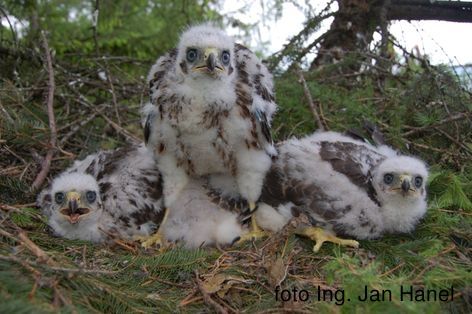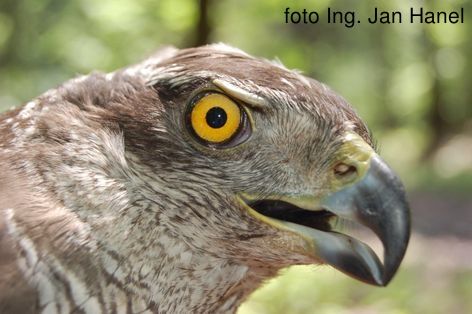
Birds Goshawk - genetic profile
Determination of genetic profile - Goshawk (Accipiter gentilis)
For parentage verification, please, order following test for the offspring: Goshawk - parentage to the genetic profile - for young
For testing a genetic profile blood samples are preferred. The
analysis is very sensitive to DNA-quality. For the analysis is sufficient 2 drops of blood in a tube with ethanol.
The determination of genetic
profile means determination of a set of genetic markers that are
characteristic and unmistakable for the given individual (such as, for
example, fingerprints of people). On the basis of a genetic profile, a
Accipiter can be uniquely identified.
.

.
To determine the genetic
profile, tandem repetitive sequences (STR) are used. These sequences,
also called microsatellites, are a class of genetic markers consisting
of tandem sequence repeats with a size of two to seven base pairs. The
alleles of STR locus change according to the number of repeats of the
given sequence motive. Due to high level of polymorphism (informativity)
and Mendelian inheritance, the microsattelites became suitable genetic
markers for the study of diversity, parentage tests and the genetic
identity.
STR alleles are determined by means of multiplex
polymerase chain reaction (multiplex PCR). One of the primers of each
pair is at 5´-end labelled with a fluorescent dye. Fragments are divided
and detected in only one electrophoretic probe using an automatic
electrophoresis device.
The laboratory guarantees determination of at least 7 from the following 8 markers: AGE1a, AGE2, AGE4, AGE5, AGE7, AGE9, AGE10, AGE11.
.

References:
Nick Dawnay et al.: Genetic data from 28 STR loci for forensic individual identification and parentage analyses in 6 bird of prey species, 2008 Forensic Science International: Genetics
M. Safrova, M. Dajbychova, B. Bláhová, K. Saskova, K. Stampachova, J. Hanel: Developing of method for routine identity testing using STR loci in Accipiter gentilis; Poster 33rd conference of the International Society of Animal Genetics (ISAG) 2012, Cairns, Australia



